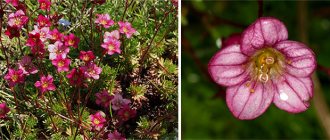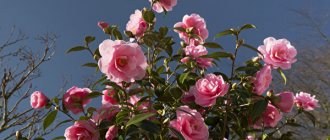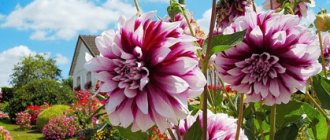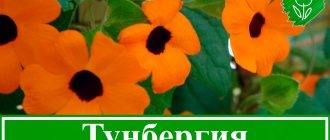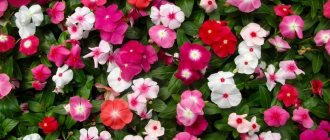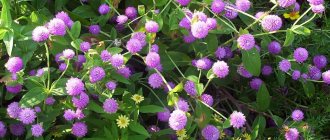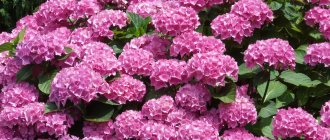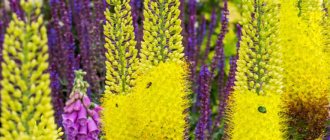Ornamental grasses will decorate any garden or balcony. Many species look great in flower beds, rock gardens, pots alone or in combination with other ornamental plants. In this article we will tell you how to grow ornamental grass gray fescue - planting and care in open ground, how to propagate it, water it and feed it, show photos of interesting varieties and other types of plants.
This herb is easy to grow, undemanding, suitable for both naturalistic gardens reminiscent of wild meadows and those designed in more sophisticated styles - English, Mediterranean, modern.
What kind of herb is this, name in Latin
Festuca glauca, commonly known as blue fescue, belongs to the Poaceae family. The crop is an evergreen or semi-evergreen herbaceous perennial plant .
Blue fescue also has other names - gray, ashy.
In nature, the plant grows in any climate and on different soils. It can be found in meadows, steppes, forests located in areas with harsh, temperate, subtropical or tropical climatic conditions.
The history of the appearance of the dove-blue festuka
Blue fescue began to be cultivated as an ornamental plant recently - at the beginning of the 20th century, with the advent of fashion for wear-resistant, smooth, dense lawns. Beautiful grass came from the Baltic states, the Urals, and the Caucasus . It is also native to Central and Eastern Europe.
Caring for fescue: fertilizing and watering
In open ground, the plant does not require special attention. On particularly dry days, fescue is watered. There is practically no need for weeding and loosening. Fertilizer application is treated with caution, since fescue does not tolerate excess nutrients. During the season, you don’t have to apply any additional fertilizing at all.
Fescue does not require special care
To maintain an attractive shape, get rid of last year's dead leaves. They do this with the arrival of spring, cutting off excess stems and leaves. If the plant is not required to produce seeds, then the peduncle is also broken off.
Advice. Buy only varieties adapted to your area.
Snowless, frosty winters and spring floods pose a particular danger to fescue. To prevent the plants from dying, they are covered with straw or a dry leaf. Placing fescue trees on higher areas and slopes will help prevent the roots of the grass from rotting.
If fescue is present in the lawn mixture, then care for it according to the instructions on the package.
The use of fescue in landscape design
Blue fescue is an ornamental grass intended for landscaping gardening areas, as well as:
- as a background plant, filling all the gaps in flower beds, borders, mixborders;
- as soil-strengthening lawn plantings on open slopes and slopes, allowing you to create a beautiful and unique carpet;
- as an elegant accent in the design of rock gardens;
- as a beautiful addition to the main elements of the composition, helping the ensemble acquire a holistic image;
- to create spectacular flower beds and mosaic panels in city parks.
Blue fescue combines harmoniously with other plants. Landscape designers recommend growing it next to conifers, barberries, small spreading shrubs and euonymus. The beauty of this cereal is best revealed by plants with massive leaves (geranium, geranium, cuff). An elegant contrast with other cereals (sedge, millet) is also effective.
On a note ! Gray fescue can both transform areas and become a beautiful background and element of landscape design, harmoniously combining with well-chosen neighbors.
Pests and diseases of fescue, combinations with other plants
The culture is resistant to diseases and is rarely affected by pests. In cases of waterlogging in open ground, opheobelosis (fungal rot of the stem) develops. The mycelium quickly spreads throughout the area and infects new plants. Detecting the disease at an early stage visually is difficult. Rot is most often detected when the leaves and stems turn black. As a preventative measure, it is useful to add ammonia-potassium complexes to the site and acidify the soil. Infected plants are burned.
The fungus also causes infection of seeds. A brown felt coating appears on the spikelets. Such material is not suitable for planting and must be destroyed.
Fescue in landscape design
Wild fescue is common in almost all climatic zones. The plant is found everywhere in forests of the middle zone, in the subtropics and tropical mountain regions. It takes root well on poor rocky soils and in arid areas. Fescue is used as a pasture forage crop. Another practical application is that turf holds back crumbling mounds. Decorative varieties decorate flower beds, rockeries, and unusual “rock gardens.”
Fescue goes well with many plants. A classic is a partnership with conifers: juniper, cypress, thuja. Such ensembles will create the impression of an untouched corner of wild nature.
Tall species often play a leading role in compositions. Lush bushes planted in the center are complemented by bright flowering herbs. Low-growing - usually serve as decoration for borders and the edges of garden paths. A continuous “carpet” of fescue can be used as a lawn near the cottage. Feel like a landscape designer of the site, show your imagination. Use an incredibly pliable natural material - fescue.
Blue variety varieties
Varieties of gray fescue are characterized by the richness of the foliage color, the height of spherical bushes and panicles with peduncles. Among the common varieties :
- Freddy is a compact bush up to 20 cm high with bluish-green leaves.
- Meerblau – attracts attention with a sea green curtain.
- Elijah Blue is a plant not exceeding 30 cm in height, characterized by narrow, emerald blue foliage and gray-green inflorescences.
- Varna is an annual that boasts hemispherical bushes with bluish-blue leaves.
- Soiling - fascinates with the bluish or ashy coloring of the modified foliage.
- Festuca cinerea is a lush blue-green shrub reaching up to 60 cm in height.
- Intense Blue . The bushes are compact with cylindrical foliage of blue color with a grayish bloom.
Thanks to the rich variety of varieties, you can bring interesting ideas to life and create a stunning composition in any flowerbed.
You will learn more about the varieties of gray fescue from this article.
Amethyst fescue
A medium-sized type of fescue - spherical curtains reach 50-60 cm in height and 1 m in diameter, they are less neat and more loose than those of gray fescue. Shades of foliage are often gray-blue and blue-green, flower panicles are usually greenish-violet.
The plant is thermophilic, needs a warm place and requires drained, loose, poor soils - on rich soils and in the shade it loses its decorative effect. The degree of winter hardiness is high, but in cold winters evergreen leaves can die and then recover.
Popular varieties of amethyst fescue : Aprilgreen with green leaves, Superba with bright silver-blue leaves, Klose with olive leaves, Bronzeglanz with bronze spikelets.
Botanical description and photo
The ornamental plant forms a spherical bush, not exceeding 60 cm in height, and has:
- dense compact crown;
- a dense, but not short, small root system;
- linear, narrow foliage from gray-green to blue, up to 15 mm wide;
- gray-green inflorescences, in soft panicles on a straight stem, after flowering they acquire a light brown color;
- plump, wheat-like seed pods.
In addition to the decorative foliage of fescue inflorescences, it is important to note the fascinating flowering, which starts in June-July.
Attention ! The lifespan of a culture in one place is up to 10 years. But for this it is important to divide and replant the clumps every 2-3 years.
This is what gray fescue looks like:
Red fescue
It is considered one of the best lawn grasses - it grows well in dry soil, but easily tolerates flooding, as well as partial shade and frost, remaining decorative.
The plant will help create an even, thick carpet of rich green color on the site, although in the first year growth is greatly slowed down. The advantages of red fescue are rightfully considered to be even grass stand, frost resistance, and the ability to quickly recover from damage.
The sod consists of bare stems 6-8 cm long and dense lateral shoots of a reddish hue, which are densely covered with narrow ribbed foliage 30-40 cm long. During the flowering period, loose panicles about 12 cm long appear.
Characteristics of herbaceous plant
Blue fescue is characterized by increased drought resistance, is able to fully grow in open sunny areas , and can also successfully withstand 2 weeks without rain or watering.
Most varieties of this crop can withstand temperatures down to -30 °C and do not need additional protection in winter. The frost resistance of a plant depends on where the plant was selected, which is why when buying seeds, it is better to choose those species that have already acclimatized to the conditions of the growing area.
Recommended varieties for the garden
On your summer cottage you can plant the following varieties of fescue:
- Glacial Titmouse. The height of the Titmouse's stems is only thirty centimeters, and the cushion of leaves is even lower. The inflorescences fit tightly to each other, so they seem massive.
- Gautier. Festuca gautieri is a low plant with a turf of bright green leaves, the height of which is about ten centimeters. The cushion of this variety is so dense that it looks artificial.
- Thread-like. This variety has a loose structure, the length of the leaves is fifteen centimeters. Peduncles grow up to thirty centimeters and have loose panicles that decorate the plant.
- Sheep. It has bristly greenery on which hemispherical hummocks form. The leaves are hard and reach ten centimeters in length. The panicles have spikelets of complex shape with a drooping structure.
Landing rules
This cereal grows best on light and loose soils that are well-permeable to air and water . When choosing a place for planting, it is better to give preference to warm, dry areas that are well lit by sunlight without drafts.
It is recommended to plan sowing seeds in the spring, when the air and soil temperatures have stabilized, or in the fall, before the onset of frost.
Landing technology:
- Treat the seed material with a non-concentrated solution of potassium permanganate.
- Make holes no more than 5 cm deep, keeping a distance between them of 10 to 20 cm.
- Place 5-7 seeds in each hole.
- Gently sprinkle with fertile soil, lightly compact and water.
The first shoots will delight you after 2-3 weeks; the sprouts will quickly form lush tussocks.
The rules for planting gray fescue are described in detail here.
Pests
Gray fescue is highly resistant to pests. But with group plantings with other garden crops, the likelihood of damage increases.
Common crop pests:
- Aphid . A small green or black insect that feeds on plant sap. It multiplies quickly and forms entire colonies. To destroy, it is recommended to spray the bushes with Iskra and Confidor Extra.
- Thrips . The size of the pest is from 0.05 to 0.3 cm, the body color is brown. The insect has a sucking mouthparts that feed on plant sap. When thrips appear, it is necessary to treat the bushes with Decis and Inta-vir.
Reproduction
Gray fescue can be propagated using the vegetative method. This plant is easy to divide in the spring, at the time of rejuvenation of old clumps , by separating 2-3 sods and removing the dried center.
Many people practice breeding the crop by obtaining strong babies from the mother plant, which must be moved into pots for the winter and sent to rooms with a cool temperature and good lighting.
Mother bushes divided in March make it possible to obtain strong and healthy plants in the first year after planting.
You can also replenish your collection of beautiful fescue with the help of seeds. At the same time, it is not at all necessary to grow them using seedlings; the seed material produces abundant self-seeding .
How is blue fescue propagated?
Fescue can be propagated by various methods: seed, seedlings and division of the bush. Blue fescue seeds are very easy to purchase in the store, or you can collect them yourself from an adult plant. It must be said that when flowering fescue forms panicle inflorescences. Imagine one fact: that the largest and most beautiful of them must be abandoned for the seeds to ripen
Please note that after the plants have flowered, the spikelets are collected, dried and extracted from their seeds
Fescue is sometimes grown by seedlings, planting seeds in small boxes. A light substrate is suitable for planting
Please note that the seeds are sown on the surface of the ground and not sprinkled. In other words, they themselves grow into the ground with their sharpened tips. Typically, crops are watered with settled water, covered with transparent glass and placed in a warm, sunny place.
Typically, crops are watered with settled water, covered with transparent glass and placed in a warm, sunny place.
Still, using ornamental grasses, like blue fescue, it is easy to create various compositions in the garden. The plant is perfectly preserved when dried and is used to create unique winter bouquets. Create unforgettable beauty on your site!
Fescue in all its varieties is incredibly decorative precisely because of its simplicity: thick thin leaves-needles form real “balls”, from which rare spikelets on tall thin stalks stick out during flowering. It looks playful and impressive, especially if the cereals are set off by brighter flowers.
Gray shades are especially interesting due to their rarity. The slightly bluish tint effectively sets off any green plants and even bright flowers. It is impossible to refuse such an attractive plant, which, moreover, is very easy to care for.
Care instructions
Despite their unpretentiousness, blue fescue bushes require the following care measures.
Watering
Gray fescue is a drought-resistant crop that does not tolerate stagnation of excess moisture , as this is fraught with rotting of the root system. Taking this into account, it is important to moisten blue fescue as the soil dries, preferably with melted or settled water.
Top dressing
Fescue does not need fertilizing. Only in case of deterioration in the growth and development of the plant due to excessive scarcity of soil composition. It is necessary to add organic matter and mineral compounds according to the instructions, without exceeding the dosage.
Trimming
The plant needs to be pruned in the spring, clearing the bushes of dead foliage , thereby giving the grass an aesthetically attractive appearance. It is also necessary to remove all flower stalks with panicles in the summer months after flowering.
Transfer
Every 2-3 years, the hummocks need to be rejuvenated by dividing and moving them to a new area. Transplantation has an excellent effect on both the condition of the foliage and the intensity of their color. After the procedure, they acquire a magnificent silver color, shine and the required thickness.
Preparing for winter
The plant is not afraid of frost. Even if the foliage freezes, in the spring the bush will quickly restore its leaf mass .
But in regions with harsh and snowless winters, it is recommended to cover the hummocks with fallen leaves, straw, and peat.
Young specimens are able to withstand cold snaps and minor frosts much more easily than 2-3-year-old shrubs.
You will find more complete information about caring for gray fescue in this article.
Growing conditions
Fescues are very hardy grasses that do not have great requirements for the planting site or soil. However, to increase its decorative value, it is worth spending some time caring for fescue. This species loves light soils, warm sunny places, then its leaves acquire a beautiful blue color. The drier and sunnier the area, the brighter the color of the leaves.
The bluish leaves of this fescue are covered with a waxy coating, which makes it resistant to sunlight. An additional property of this plaque is the ability to retain water, protecting the plant from drying out.
Landing location
Fescue will grow in almost any location (sunny, semi-shaded, shady), but in order for the plants to be beautifully colored, bloom and be resistant to fungal diseases, it is better to plant them in warm, sunny areas. It is optimal to plant fescue on the south or west side of the garden so that the grass remains in the sun as long as possible.
Tall varieties need to be provided with shelter from strong winds, which can break the inflorescences.
The soil
Fescue trees love soils with the following characteristics:
- lungs;
- not very fertile;
- permeable;
- dry and even gravel;
- with neutral or slightly alkaline pH;
- It is good if the soil contains calcium compounds.
It is in such conditions that grass can be found in nature. On too wet, heavy, clogged soils, fescue trees grow poorly and are more susceptible to fungal diseases. They don't need a lot of soil fertility and they grow quite quickly.
For planting in containers, mix the universal substrate for balcony plants in half with sand, and be sure to place a drainage layer on the bottom of the pot or box.
On very good, fertile soils, ideal for many types of ornamental plants, blue fescue loses its decorative value, the color of the leaves ceases to be blue and becomes green.
Advantages and disadvantages
Gray fescue is popular among gardeners due to a number of advantages :
- attractive appearance: silver effect, graphic texture, volume and airiness;
- dense soil tightening in the first year of cultivation;
- rapid germination, allowing you to obtain mass shoots within a week after planting;
- high frost resistance, cold resistance when temperatures drop to extreme values;
- resistance to sudden weather changes;
- good shade tolerance;
- immunity to diseases and pests;
- durability, the plant does not lose its decorative effect for 10 years, provided that the growing technology is followed.
The main disadvantage of gray fescue is the rapid degeneration of clumps.
2-3 years after planting, the center of the plant’s turf will begin to die off. To maintain attractiveness, you should constantly rejuvenate and divide them. Also, when growing, it should be taken into account that the plant does not tolerate trampling well and is not recommended for arranging play areas and areas for active recreation. Bald spots that occur during intensive use of the coating can dramatically worsen the appearance of the lawn in the shortest possible time.
Possible problems
Growing crops does not cause difficulties even for novice gardeners. But if the growing conditions do not match, the plant develops poorly and loses its decorative properties.
Possible difficulties:
- Sharp wilting of the bushes , but at the same time they retain the bluish tint of the leaves. The problem arises against the background of prolonged stagnation of moisture in the soil, which leads to rotting of the root system. It will not be possible to save such a plant.
- Drying of the central part of the bushes . This occurs as the plants grow and is a disadvantage. Therefore, it must be periodically seated.
- Slow growth of clumps . The plant does not develop well with a lack of light, as well as in prolonged hot and humid weather.
And it will create a background and protect it from weeds.
The most time-consuming task in the garden is weed control. And they solve this problem in different ways - some weed, some mow. But there is a third way - sodding with perennial ground cover grasses - a special case is a lawn.
Anyone who has dealt with a lawn knows what a tedious task it is. I tried it too, by the way, it worked. But the costs that had to be faced forced us to abandon this idea. And not only because of labor intensity. Our country garden, due to its bizarre topography, is divided into separate patches, and there is simply nowhere to put a parterre lawn there. Plus moles and mice, which turned out to be impossible to deal with, since the garden borders the forest.
This whole complex made me choose ground cover perennials. And not the least role was played by the acquisition of Gautier fescue. Judge for yourself. Firstly, it forms a highly decorative cover, impenetrable to weeds, attractive from snow to snow. Secondly, its low emerald green mats blend organically with any shrubs and trees, and thanks to its shallow roots it does not interfere with the growth of other plants. Thirdly, it is quite unpretentious and easy to care for.
Spoiler
- https://agronom.guru/landshaftnyiy-dizayn/gazonyi/vidy/ovsyanitsa/trostnikovaya
- https://landas.ru/travynistie-rasteniy/ovsynica-sizay/
- https://kizilniki.ru/2021/03/primenenie-ovsyanitsy-sizoj-v-sovremennom-landshafte/
- https://a1-exp.ru/ovsyanitsa-trostnikovaya-dlya-gazonov/
- https://agronom.guru/landshaftnyiy-dizayn/gazonyi/vidy/ovsyanitsa/ovechya
- https://sad-i-semena.ru/clauses/ovsyanitsa-ovechya-opisanie-kharakteristiki-i-ispo/
- https://glav-dacha.ru/ovsyanica-krasnaya-dlya-yeffektnogo-gazona/
- https://idachniki.ru/sadovie-rastenia/ovsyanica-krasnaya-opisanie-vyrashhivanie-uhod-razmnozhenie.html
- https://Green-design.pro/entsiklopediya-rastenij/krasnaya-ovsyanitsa/
- https://kvetok.ru/travy/trava-ovsyanitsa-i-eyo-vidy
- https://ogorodniki.com/article/ovsianitsa-sizaia-v-landshaftnom-dizaine-sochetanie-s-drugimi-rasteniiami-variatsii-kompozitsii
- https://vladgarden.ru/stat/rasteniya/o/ovsyanicza-gote-marya-iskusnicza-vashego-sada/
What types are suitable for lawns?
Gray fescue varieties have one thing in common - the grass is not intended for walking on .
Therefore, this variety of cereals has found its best use in the decorative decoration of personal plots, urban and rural landscapes.
Optimal use of blue fescue varieties:
- “Blue hummock” harmonizes well with the aesthetics of reservoirs.
- “Lapis lazuli” creates a wonderful frame for taller and larger plants.
- The “Glacier Tit” with its thick hemisphere will fit perfectly into a rock garden.
- The varieties “Amethyst” and “Varna” will decorate the rocky slope and will favorably emphasize the texture of the site.
- "Elijah Blue" quickly forms a lush turf that stands out effectively against the background of stones.
- The gentle contours of “Festina” will create soft accents in the design of borders.
A fescue lawn tolerates mowing well, the stems do not become coarse or thicken , which makes the grass popular for beautifying private and public home spaces. Fescue is resistant to gas pollution and high concentrations of harmful substances in the soil and air, which makes it advisable to plant the crop along highways for landscaping factory areas.
Which ones are not suitable and why?
Varieties of the gray variety of grass are sensitive to trampling, so blue variations of fescue should not be used for sports lawns, playgrounds, and walking trails.
The perennial grass is perfectly adapted to cold, dry summers , but is very sensitive to close groundwater and does not tolerate marshy, shady areas. When decorating ponds, it is necessary to take into account the properties of the plant.
Due to the high resistance of fescue to unfavorable conditions, the plant does not tolerate sudden temperature changes or severe, prolonged frosts. Avoid planting ornamental grass in open areas that are flooded in spring.
